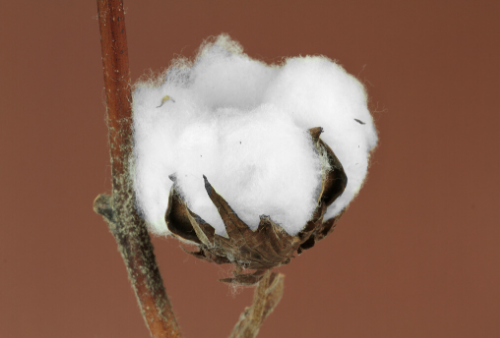Cotton and sustainability go hand in hand. Not only is cotton a sustainable fiber as a naturally biodegradable, compostable and renewable resource, but also the U.S. cotton industry is making significant efforts to create more sustainable operations around soil, water, energy, land, biotech, and pesticides. Let’s discuss some of these efforts, as well as the meaning of sustainable cotton.
How Is U.S. Cotton Sustainable?
Cotton, first and foremost, is sustainable by nature. Unlike synthetic, or chemically-produced fibers such as polyester and rayon, cotton fiber is grown naturally from the earth. Additionally, relative to other crops, cotton doesn’t require much land or water to thrive. In fact, as a heat-tolerant plant, most U.S. cotton is grown using rainfall only, and half of cotton worldwide also survives on rainfall. It’s also important to remember that the cotton crop produces a lot more than just t-shirts and household products: Each harvest produces even more cottonseed than fiber, and the seed is used as cattle feed or in the production of edible oils. Other byproducts that are not fiber or seed can be used as compost.
While there is no official definition of sustainable cotton, many people define it as cotton that has been grown using more sustainable, eco-friendly practices. That often means that cotton farmers used less water, less land, and fewer pesticides compared to all cotton farming operations.
U.S. Cotton Industry Sets Standard for Sustainable Cotton Production H
The U.S. cotton industry, including multiple trade organizations such as Cotton Inc., CottonLEADS, Cotton USA and the National Cotton Council of America, as well as the full supply chain from the farmers, ginners, merchants to the manufacturers and converters, are committed to developing and sharing responsible production practices which create economic sustainability while also minimizing the impact on natural resources. According to a study spanning the time period of 1980-2015, the following U.S. cotton production improvements were reported:
- Land use was reduced by almost 50%.
- Soil erosion decreased by 35%.
- Irrigation water use decreased almost by 80% on a unit of production per hectare (acre) basis, while also decreasing on an absolute basis by over 50%.
- Energy use reduced by over 50%.
- Greenhouse gas emissions decreased by 40%.
While these improvements are exciting, the industry strives to continue its progress and accelerate its commitment to sustainable cotton production throughout the supply chain. As a result of this commitment, a U.S. cotton sustainability task force comprised of the National Cotton Council of America, working with seven industry supply chain segments, such as producers, ginners, warehousers, merchants, cottonseed crushers, cooperatives and manufacturers, developed science-based targets for continuous improvement of cotton production over the next ten years.
Cotton Incorporated is supporting this initiative through its research, education, outreach, and extension.– six goals for the 10-year sustainability plan
- Increase soil carbon by 30 percent
- Increase land-use efficiency by 13 percent
- Decrease greenhouse gas emissions by 39 percent
- Decrease soil loss per acre by 50 percent
- Decrease water use by 18 percent
- Decrease energy use by 15 percent
Far from a set of arbitrary numbers, these goals are based on research and are highly realistic. Cotton farmers are already making big strides in sustainability: Today, U.S. cotton farmers grow nearly double the amount of cotton than they did on the same amount of land in 1980. With the advent of modern farming techniques, soil erosion has decreased by almost 70 percent. Water use efficiency has also climbed to 82 percent. Thanks to better crop yields, field practices, and fertilizer management, cotton’s impact on climate change has been reduced by 22 percent over the past 30 years.
Better practices mean a purer cotton plant, too. Since the late 1980s, major strides in pest management strategy and biotechnology – including the hugely successful Boll Weevil Eradication Program – have led to a large reduction in the number of insecticide applications (50 percent less). On average, just 5 grams of pesticides are used per kilogram of cotton, and many of them target specific species. This allows beneficial organisms to survive unharmed, and continue filling their natural roles in the ecosystem.
In summary, cotton as a plant, and as an industry, is naturally sustainable and continues to move in a more sustainable direction each year. With forward-thinking yet realistic goals set in place by the U.S. cotton industry, cotton farmers are sure to reach new heights in sustainability over the next several decades.
